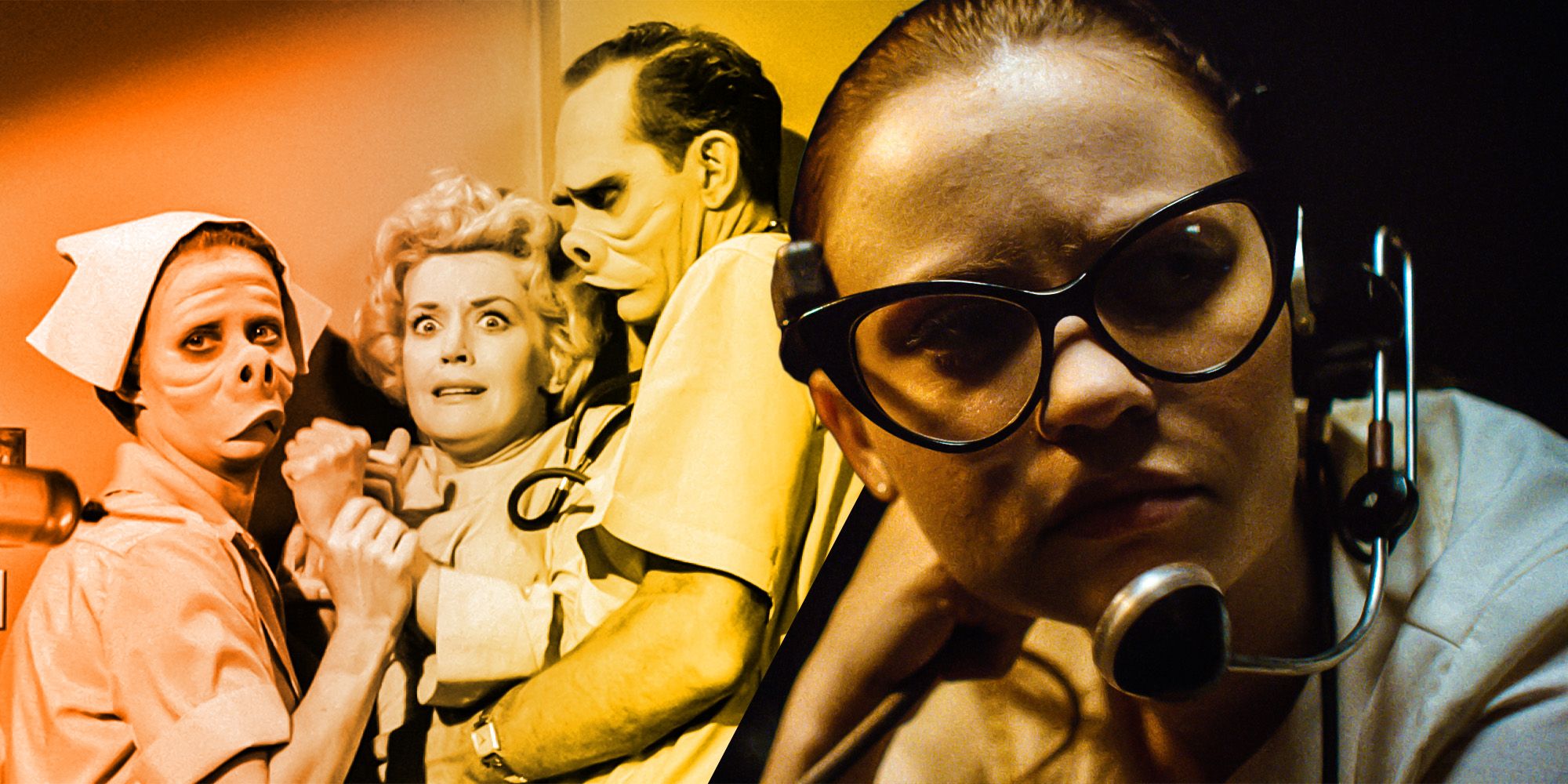Sci-fi thriller The Vast of Night conjures up a retro feeling through its presentation and plotting, but the film's cinematography and camerawork are perhaps the most crucial elements in this homage. Through these cinematic choices, the film pays tribute to classic television from the 1950s and '60s, in particular series like The Twilight Zone and The Outer Limits. This influence extends past the movie's '50s setting and also encompasses camerawork, with devices like long takes and static shots recreating the feel of early television drama. It's this attention to detail that made The Vast of Night one of 2020's best sci-fi movies.
The influence of classic television drama is present from the opening moments of The Vast of Night. The film begins with a black-and-white credits sequence, displayed on a flickering, vintage TV set. The sequence is intended to replicate those of early science-fiction anthology series like The Twilight Zone. The movie also includes a careful recreation of 1950s audio-visual technology, from tape recorders to switchboards, and this same interest influences director Andrew Patterson's cinematic choices.
One of the most distinct characteristics of early television dramas was the use of a fairly static camera. Dramas of the 1950s were essentially filmed plays, sometimes literally in the case of anthology dramas like Playhouse 90 or Studio One. This is preserved in Patterson's movie through long, static shots like that of Sierra McCormick's Faye at her switchboard or Mabel's long monologue about her beliefs on aliens shortly before The Vast of Night's mysterious ending. The lack of camera movement helps to focus attention on the actors' performances as well as pay tribute to the simplicity of the TV shows that inspired the movie.
The Vast of Night also includes several extended long takes with no visible camera cuts, such as the lengthy conversation between Faye and Everett (played by Jake Horowitz) at the beginning of the movie and the long camera sweep through the town. These scenes also help to intentionally expose the artificiality of the set and its sterile, empty look. The impression of Cayuga as a physical space is less that of a real town and more of the kind of studio sets that early filmed TV shows ranging from The Twilight Zone to Gunsmoke were filmed on.
Over the past decades, long takes have become a showcase for TV and film directors, such as in episode 4 of True Detective (itself inspired by classic noir) or the full-movie long take of 1917. In The Vast of Night, however, this is more than just a directorial showcase. Avoiding camera cuts and dramatic moments of action helps to replicate the conditions of early television, which needed to hold an audience's attention wholly through spoken dialogue. While Patterson's visual style is distinct, there's also an element of minimalism to it, putting the focus on the actors throughout.
Recent years have seen numerous works try to recapture the feeling of classic science fiction television, including an official Twilight Zone revival, with mixed results. The Vast of Night is one of the most successful of these attempts, not just because of the script and performances, but also in the way that the camerawork and cinematography replicate the film's inspirations, and the limitations those works were created under, while still creating a compelling film for a modern audience.


